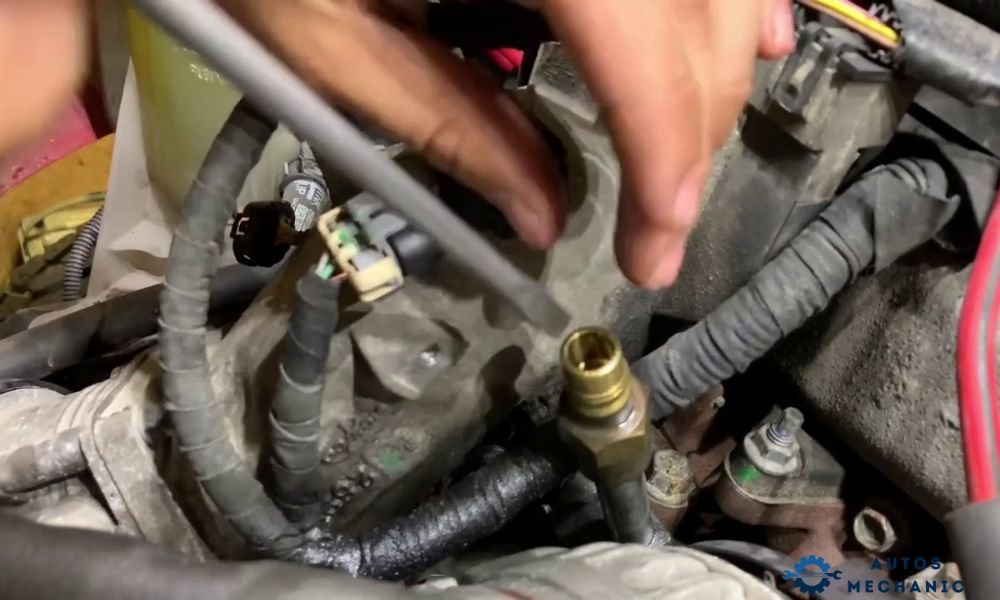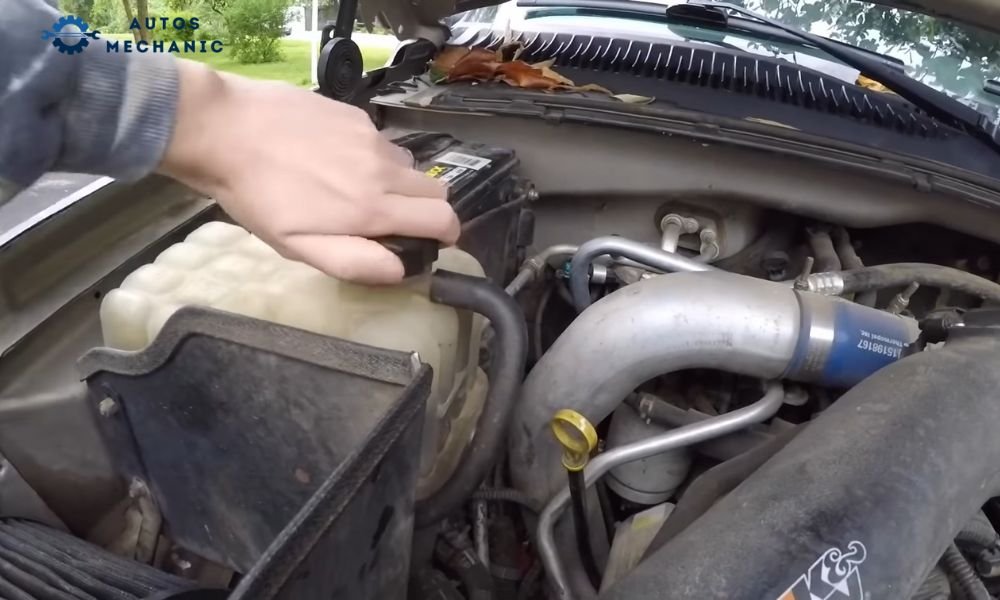Duramax Air in Fuel Symptoms, Causes, and Solutions

Air is good, isn’t it? It keeps us alive, fills our lungs, and allows us to breathe. But when it comes to your Duramax engine, air can turn from a life-giver into a troublemaker, particularly when it gets into the fuel system.
The presence of air in the fuel can lead to a range of performance issues.
As a Duramax owner, understanding the symptoms, causes, and solutions of air in fuel can save you a lot of headache – and money.
Identifying Duramax Air in Fuel Symptoms
Air in the fuel system can present several problems for your Duramax engine. This unwanted air can enter the fuel system through various points, including the fuel lines, fuel filter, and even tiny cracks in the fuel pump.
Recognizing the symptoms of air in your Duramax fuel system can help you address the problem before it leads to significant engine damage.
- Performance Issues: The most noticeable symptom of air in the fuel system is poor engine performance. This can include hard starting or long cranking before the engine starts. Once started, you may notice that the engine lacks power or stutters under acceleration.
- Engine Misfire or Rough Idling: Air in the fuel system can cause your engine to misfire or idle roughly. This is due to air bubbles disrupting the consistent flow of fuel to the engine, leading to combustion irregularities.
- Increased Fuel Consumption: If there is air in the fuel system, your Duramax may consume more fuel than usual. This happens because air in the system prevents efficient combustion, causing the engine to work harder and burn more fuel to compensate.
- Check Engine Light: Modern vehicles are equipped with sensors that monitor the fuel system. If these sensors detect air in the fuel, they can trigger the check engine light.
- Engine Stall or Shutdown: In severe cases, excessive amounts of air in the fuel can cause the engine to stall or even shut down while driving. This happens when the amount of air in the system is high enough to significantly disrupt fuel delivery.
The Science Behind Air in Fuel
Understanding the effects of air in the fuel requires a quick dive into the fundamentals of internal combustion engines. Simply put, your Duramax engine runs on a mixture of air and diesel fuel.
The fuel is pressurized and injected into the combustion chamber, where it mixes with air drawn from the atmosphere. The spark from the spark plug then ignites this air-fuel mixture, and the resulting explosion pushes the piston down, producing power.
If air enters the fuel system and mixes with the fuel before it reaches the injectors, it’ll disrupt the fine balance of the air-fuel mixture. This can lead to poor combustion, resulting in various performance issues.
Common Causes of Duramax Air in Fuel
Air can enter your Duramax’s fuel system in several ways, including:
- Leaky Fuel Lines: Fuel lines that are worn out or damaged can allow air to seep into the system.
- Compromised Seals: Seals in the fuel system, particularly around the fuel filter, can wear out over time and let in air.
- Low Fuel: Running your Duramax on a near-empty fuel tank can suck in air, particularly when driving on inclined surfaces or making sharp turns.
- Faulty Fuel Pump: A malfunctioning fuel pump can introduce air into the fuel.
Diagnosing Air in Fuel: Professional Tips and Tricks

Diagnosing air in your Duramax’s fuel system involves several steps, including visual inspection of the fuel lines, seals, and pump, as well as performance tests to check for power loss, increased fuel consumption, and other related symptoms.
However, it’s not always easy to diagnose air in fuel based on symptoms alone, since many of these symptoms can also occur due to other engine issues.
Therefore, it’s always recommended to seek professional help if you suspect air in your Duramax’s fuel system.
Testing for Air in Your Duramax’s Fuel System
Testing for air in your Duramax’s fuel system is a crucial step in diagnosing and solving performance issues related to air intrusion. Here’s how you can do it:
Start with a visual inspection of the entire fuel system, including the fuel lines, filter, and pump. Look for visible signs of wear, leaks, or damage that could allow air to enter the system.
Next, listen for unusual engine sounds. Misfires or irregular idling can indicate air bubbles disrupting the fuel flow. A clear sign of air in the fuel is if the engine has difficulty starting or stalls during operation.
For a more precise diagnosis, consider using a clear fuel line section or an air detection kit. You can install the clear line or detection kit in the system to visually inspect for air bubbles in the fuel.
Moreover, you can perform a fuel pressure test using a fuel pressure gauge. If the pressure is lower than the manufacturer’s specified range, this could be an indication of air in the system.
Finally, check the vehicle’s onboard diagnostics system. Modern vehicles can provide error codes that signal issues in the fuel system, which could be caused by air intrusion.
Solutions for Duramax Air in Fuel

Solving the issue of air in your Duramax fuel system primarily involves identifying and addressing the source of the air leak.
Here are some potential solutions:
- Inspect the Fuel Lines: The fuel lines connecting various parts of the fuel system can develop leaks over time due to wear and tear. Check these lines for any signs of damage or leaks and replace them if necessary.
- Check the Fuel Filter: The fuel filter housing is a common point of air intrusion. Make sure the seals on the fuel filter housing are intact and the filter is correctly installed. If the filter is old or clogged, replace it with a new one.
- Examine the Fuel Pump: Cracks or damage in the fuel pump can lead to air entering the system. A professional mechanic should inspect the pump and, if necessary, repair or replace it.
- Bleed the Fuel System: If you have already identified and fixed the source of the air leak, you’ll need to bleed the fuel system to remove any remaining air. This involves opening a bleed valve on the fuel system and pumping out the air until only fuel comes out.
- Install an Air Separator: Consider installing an aftermarket fuel air separator. These devices separate the air from the fuel before it reaches the engine, thereby reducing the potential for air-induced performance problems.
- Regular Maintenance: Keeping up with regular maintenance of your vehicle can prevent air in the fuel system. This includes timely oil changes, filter replacements, and checking for leaks in the fuel system.
While some of these solutions can be undertaken by handy vehicle owners, some problems may require the skills of a professional mechanic.
If you’re experiencing persistent issues with air in your Duramax fuel system, it’s advisable to seek professional help to ensure a proper and effective solution.
DIY Tips: How to Bleed Air out of Your Duramax’s Fuel System

Bleeding air out of your Duramax’s fuel system is a task that you can accomplish yourself with some basic tools and a bit of patience.
- Turn Off the Engine: To start the process, make sure your Duramax engine is turned off.
- Locate the Bleeder Screw: The bleeder screw is typically located on the fuel filter housing.
- Loosen the Bleeder Screw: Using a suitable tool, loosen the bleeder screw.
- Pump the Fuel Primer: Pump the fuel primer until fuel starts to ooze out of the bleeder screw. This indicates that the air has been pushed out.
- Tighten the Bleeder Screw: Once you’ve bled the air out, tighten the bleeder screw, and your Duramax should be ready to run smoothly again.
Advanced Solutions for Duramax Air in Fuel
While the DIY approach can be effective in many cases, more severe air intrusion problems may require advanced solutions.
This may involve installing an aftermarket fuel system with a built-in air separation mechanism, or retrofitting your Duramax with a lift pump to ensure consistent fuel delivery to the engine.
Tools You’ll Need for Air in Fuel Troubleshooting
To troubleshoot air in fuel issues on your Duramax, you’ll need a few basic tools:
- Fuel Pressure Gauge: This tool can help you identify issues with the fuel pump.
- Clear Plastic Line: A clear line can help you visually check for air in the fuel.
- Tool Set: A basic tool set with various sizes of wrenches and screwdrivers will be handy for replacing parts or loosening/tightening fittings.
Professional Help for Duramax Air in Fuel Symptoms
While understanding and diagnosing air in fuel symptoms is crucial, some cases require professional help. Expert mechanics have specialized knowledge and tools to
accurately diagnose and fix complex fuel system issues. If the DIY approach isn’t working, don’t hesitate to seek professional help.
Preventive Measures: Avoiding Air in Fuel
Prevention is always better than cure, isn’t it? Here are some steps you can take to avoid air in your Duramax’s fuel system:
- Regular Maintenance: Regularly inspect your fuel lines, seals, and fuel pump for wear and damage.
- Keep Your Fuel Tank Full: Try to keep your fuel tank at least half full at all times to prevent air from being sucked in.
- Use Quality Parts: When replacing parts in your fuel system, always opt for high-quality components to ensure airtight seals and efficient operation.
FAQs About Duramax Air in Fuel Symptoms
What are the symptoms of air in a Duramax’s fuel system?
The common symptoms of air in a Duramax’s fuel system include hard starting or extended cranking, reduced power and performance, increased fuel consumption, and frequent stalling.
How can air enter a Duramax’s fuel system?
Air can enter a Duramax’s fuel system through leaky fuel lines, compromised seals, low fuel level, or a faulty fuel pump.
How can I remove air from my Duramax’s fuel system?
You can remove air from your Duramax’s fuel system by bleeding the system. This involves loosening the bleeder screw on the fuel filter housing and pumping the fuel primer until fuel starts to ooze out of the bleeder screw.
Can I prevent air from getting into my Duramax’s fuel system?
Yes, you can prevent air from getting into your Duramax’s fuel system by regularly inspecting your fuel lines, seals, and fuel pump for wear and damage, keeping your fuel tank at least half full, and using high-quality components when replacing parts in your fuel system.
Do I need professional help to fix air in my Duramax’s fuel system?
While many cases of air in fuel can be resolved with DIY solutions, some situations may require professional help. If you’re unable to fix the issue yourself, it’s best to seek help from a professional mechanic.
Conclusion
While air in the fuel system can cause a variety of problems for your Duramax engine, understanding the symptoms, causes, and solutions can help you maintain your engine’s performance and longevity.
Regular maintenance and vigilance are key to avoiding and resolving air in fuel issues. And remember, when in doubt, never hesitate to seek professional help.
You may also read..
